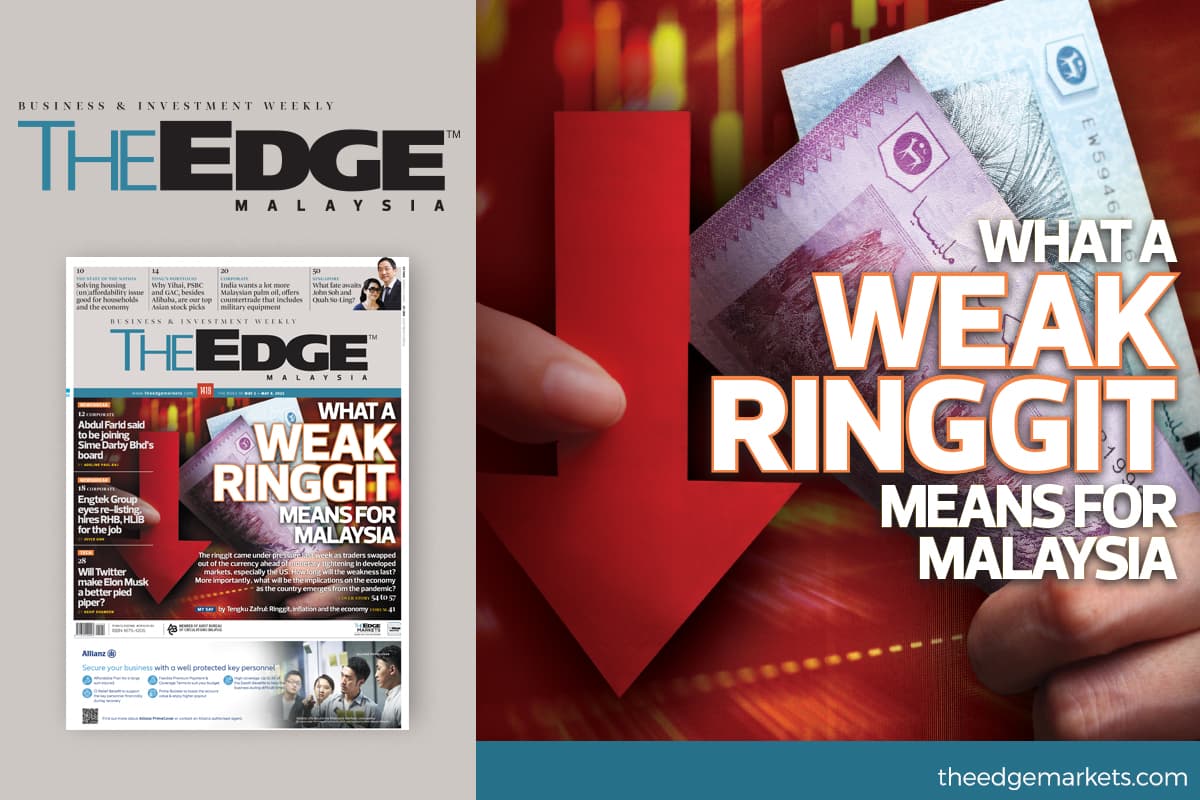
KUALA LUMPUR (April 30): The ringgit went on a downhill ride over the past week, depreciating swiftly against the US dollar as it fell to a two-year low of 4.36. The local unit was not alone as many major currencies also weakened against the greenback.
A large part of it was due to the strengthening of the dollar as investors pencilled in a larger quantum of rate hikes this year by the US Federal Reserve, which is expected to raise interest rates following a sharp rise in the US inflation rate to 8.5% in March.
How long will the ringgit weakness last? More importantly, what are the implications of a weak local note for the country, especially at a point when the economy is moving out of the Covid-19 pandemic and into the recovery phase?
In an accompanying story, we take a look at which sectors could be potential winners in the ringgit weakening cycle. The general rule is that exporters with low import content will benefit from services and products quoted in US dollars as a weak local currency will translate into higher revenue. But players that have high import content will feel the pinch, especially if they cannot pass on the additional cost to their customers.
Perhaps historical data can provide some pointers as to what investments offer better returns in the event that the local currency remains undervalued.
Read more about it in the May 2 issue of The Edge Malaysia weekly as we look into the effects of a weak ringgit on the economy as well as on equities.
Save by subscribing to us for your print and/or digital copy.
P/S: The Edge is also available on Apple's AppStore and Androids' Google Play.